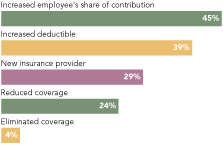While people cited being unable to afford coverage as a reason not to have it, they should actually see it as something they cannot afford to go without. On average, a long-term disability lasts more than two years. This leaves helpless workers to try to find ways to compensate for lost income and pay living expenses. Government disability benefits alone will not even come close to replacing prior income. More than 40 percent of respondents said they would purchase disability coverage if it were cheaper, but about 60 percent said they had less than six months of income saved.
About 25 percent of today’s adults who are 20 years old will face a disability before they reach retirement age. Adults underestimate the risk they face of losing their ability to work. Although accidents are what most people think cause disabilities, the main causes are actually depression, back pain and absence requests for cancer treatment. About 50 percent of respondents said they would have to drain their savings if they faced a disability. Younger respondents said they would ask family or friends for loans, but older respondents said they would seek government programs. However, both solutions are only temporary and would not suffice for a long period of time.
It is important to consider how the bills would be paid in the event of a disability lasting more than three months, and people should consider how long they would be able to cover their expenses. Couples should also consider whether they could survive on one partner’s paycheck if the other became ill or was injured. Anyone who cannot answer these questions quickly with a viable solution should seek professional advice.
People who have disability insurance options offered by an employer may find more affordable solutions in their benefits package than they would by searching independently. There are more types of coverage than just disability alone in the marketplace, so all options are worth considering. Some companies may offer more than others, but employees who do not have access to this type of coverage at work should still seek it independently. To learn what options are available, discuss concerns with an agent.




